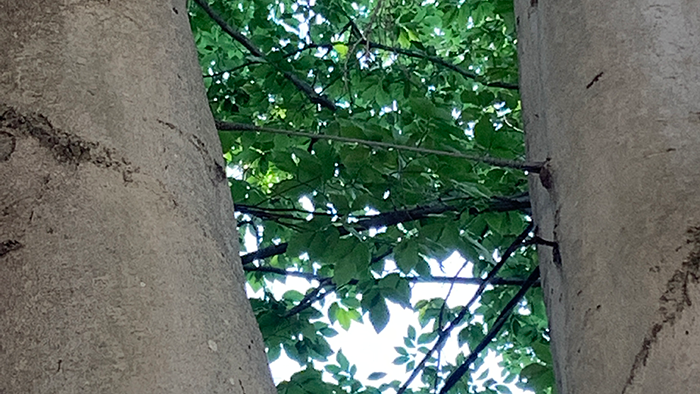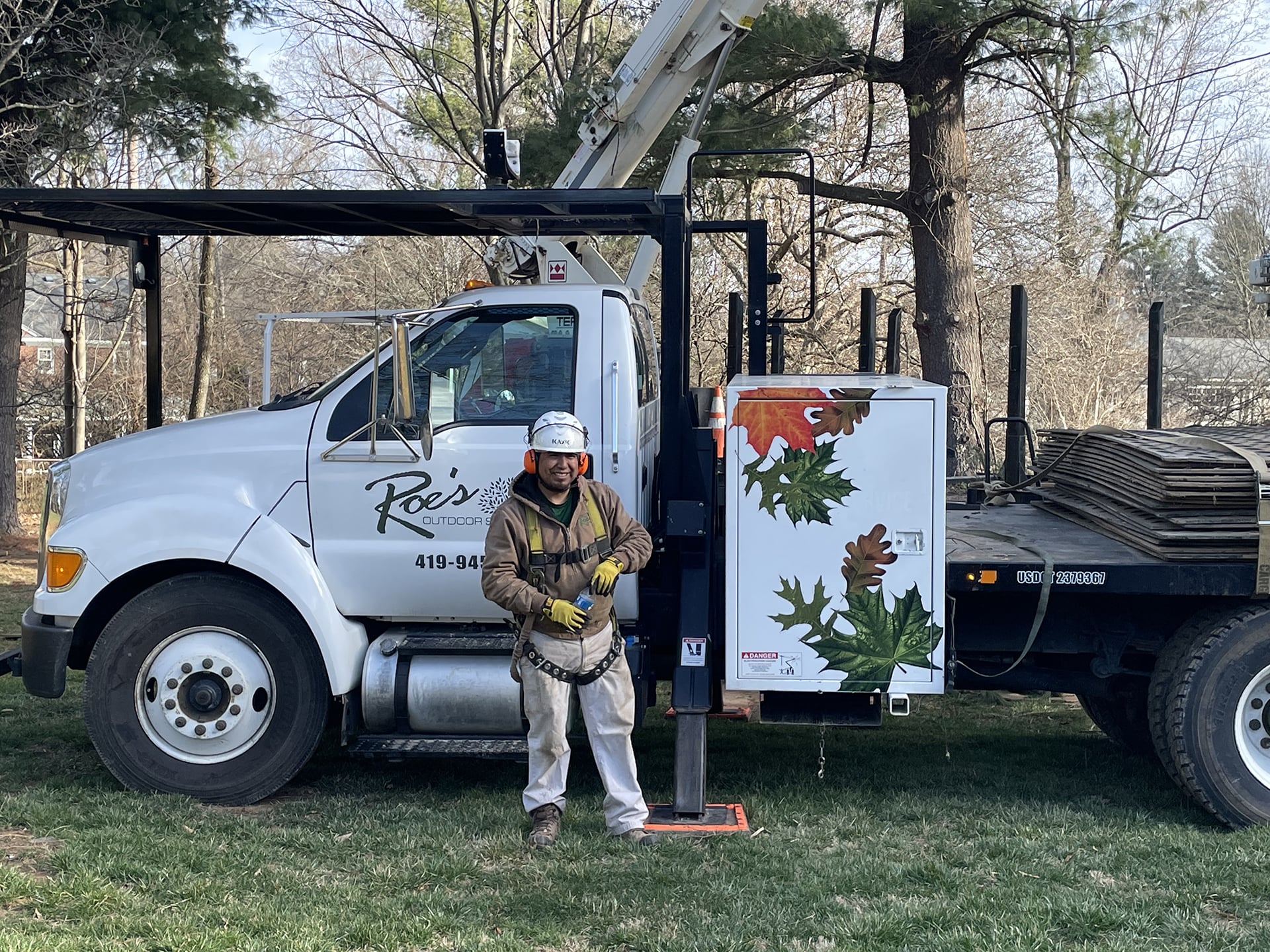Cabling & Bracing
View Our Cabling & Bracing Projects

The Highlands, Kentucky
What is Cabling & Bracing?
Urban trees can grow in ways that aren’t always the healthiest or most long-term sustainable. This can occur for a variety of reasons:
Poor Branching Habit
Split/Cracked Limb Structure
Species characteristics
Improper pruning
Heavy fruits/crops
When the weak areas fail, limbs, trunks, or the entire tree can come crashing down, ruining anything underneath it.
Urban trees often need physical support to reduce the risk of structural failure of the crown, body, or root system. Cabling, bracing, guying, and staking can provide a solution for these tree failures.
Most Common Structural Issues in Trees
1. Codominant stems or “V-crotch” branch unions are structurally weaker than a single stem or
with the right branch ratios and spacing. The lack of connective tissue that connects a stem to the tree trunk, as well as the presence of included bark between the stems, contribute to its weakness. The best way to avoid problems with codominant stems is to choose plants with good branch structures. An alternative for a tree with poor branch structure is to remove or subordinate prune one of the codominant stems as early as possible in its life, allowing a dominant leader to develop. Bracing or cabling may be the only way to strengthen an older tree with poor branch structure.
2. Overextension frequently leads to structural issues. This pertains to the presence of unusually long, heavy, or far-outstretched limbs with the majority of foliage concentrated at the branch’s end. Overextended limbs frequently break at the branch-stem junction. Tension and compression can also cause a branch to crack. Wind, snow, or ice can also cause these failures. Large pruning cuts can be avoided by installing cables or propping. However, early corrective pruning is still the best way to prevent this problem.
Effective Tree Support Devices
Cabling.
Cabling system consists of flexible, extra-high-strength steel strand cables are attached to bolts installed in the upper crown of a tree by drilling through the wood. This device aims to reduce stress damage from high wind or the weight of ice or snow. It can also essentially strengthen weak branch unions or limbs so that they can better withstand severe weather conditions and survive longer. The system transfers weight from a weak to a stronger branch union, prevents breakage, and limits how far a branch can move in relation to the rest of the tree. Cables can also be installed to support overextended branches.
Bracing.
Braces are threaded rods that are drilled through the tree and installed through the unions of weak branches and multiple stems to provide more rigid support. Brace rods are used when trees have codominant or multiple leaders. These rods can help prevent stems from spreading apart or moving sideways in relation to one another. In many cases, bracing can be used to repair a split crotch or branch union.
A combination of cabling and bracing is frequently used to provide the safest and most stable support for the defective tree parts.
Benefits of Cabling & Bracing
Tree-support systems and devices, such as cabling and bracing, can help the tree by restricting the movement of branches, leaders, or the entire body. By providing additional support for structurally weak areas of the tree, they can reduce the risk of human injury and property damage.
However, it’s important to remember that tree support installations, systems, and devices can’t eliminate every risk. A qualified arborist and tree care service such as Roe’s Outdoor Services, Inc. should be consulted to determine a tree’s eligibility for a support system.

Save Your Tree, Time, and Money!
Installation of cable and bracing is a difficult task best left to qualified arborists. The first step in installing any system is to contact a qualified professional like Roe’s Outdoor Services, Inc. The tree should be thoroughly examined, and the installation’s goals should be clearly defined. Pruning is a common part of the process that should be completed before any installation. Following the installation of tree supports, maintenance is minimal but necessary. Annual inspections and checks for loose hardware or adjustments are strongly recommended for ground tree support systems.
